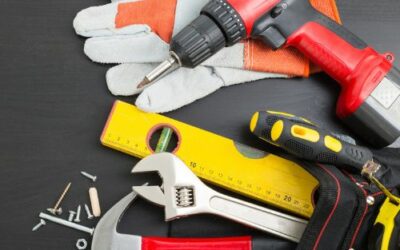If you’re looking for a tool tracking software, you’ve come to the right place!
Where to begin, though? How do you know which is the best software for your needs?
You may have a lot of different voices talking to you about different needs, requirements, and different functionalities, which can sometimes make finding the best tracking software difficult.
Luckily, we’ve come up with a few simple ways to select the best tool tracking software for you.
Why are you Looking for a Tool Tracking Software?
First things first, you’ll need to know what your needs are.
There will be a core functionality behind any tool tracking software. This will be the use of barcodes, QR code asset tags, RFID tags, or GPS tags to track and manage the movement of your tools.
The best tool tracking software will update the last seen location and last known user with every scan of a QR code or barcode.
You will need this core functionality for many different reasons. This is where the selection process will come in.
Either you’ll want to know how assets have moved for auditing processes. Maybe you’ll have contractors on-site, and you want to verify that they’ve used the tools they’ve been hired to manage for the correct amount of time.
Or, you may want to run audits to see where tools have been at any time so that you instantly know what’s missing and needs to be replaced or retrieved.
It could even be as simple as increasing transparency, responsibility, and accountability when it comes to the movement of your tools.
Knowing what you want to do with the data, tool tracking software will collect is crucial in selecting the correct software for you.
What’s your Industry?
Whatever your industry is, tool tracking software can assist you with the tracking, management, and overall control of your tools, equipment and machinery.
However, your industry may change how your tools are used, or which tools you’re using.
At first glance, this may not seem like it has much of an effect. Look deeper, and the way you use your tools will affect retrieval, use, maintenance, and movement processes.
For example, if you work in the restoration industry, you may leave tools and equipment on-site. It’s, therefore, crucial to have a tool tracking software that can tell you how long something is supposed to be left on-site, to streamline asset retrieval.
If you work in the construction industry, your tools may move from site to site. In this case, it’s important to monitor how your tools are moving, who’s moving them, and making sure they arrive at the correct site.
Knowing your industry helps you know your tools and equipment which, in turn, will help inform you in your decision about which the best tool tracking software for you will be.
Testing your Tool Tracking Software
Whatever you decide to go with, it’s important to be able to test it. Whether this is in terms of a smaller roll-out, before scaling to something company-wide, or a simple 14-day free trial, being able to test your tool tracking software is crucial.
Whether you’re looking to audit locations, increase accountability, track maintenance, retrieve assets on time, or lose fewer tools and, therefore, revenue, itemit may, in fact, be precisely what you’re looking for.
You can read more about how we can help with your tools and equipment tracking here. Or, if you have more questions, you can contact us at any time at team@itemit.com.
Select the Right Tool Tracking Software Now!

Try itemit
Choose a better way to track
your assets.
Start your free 14-day trial now!

Keep Learning
itemit Blog
Tips, guides, industry best practices, and news.
Why Your Library Needs Asset Tracking Software
Your library needs a tracking system so you know where your inventory is all of the time. Discover why an RFID asset tracking system is ideal!
How To Switch To Asset Tracking Software
Have more than a few assets and want to have more control over them? Read this post to find out how asset tracking software can help!
Tool Maintenance Made Easy
Would you like to keep your tools in a better condition? read this post now to find out how using pre-emptive maintenance can help!

